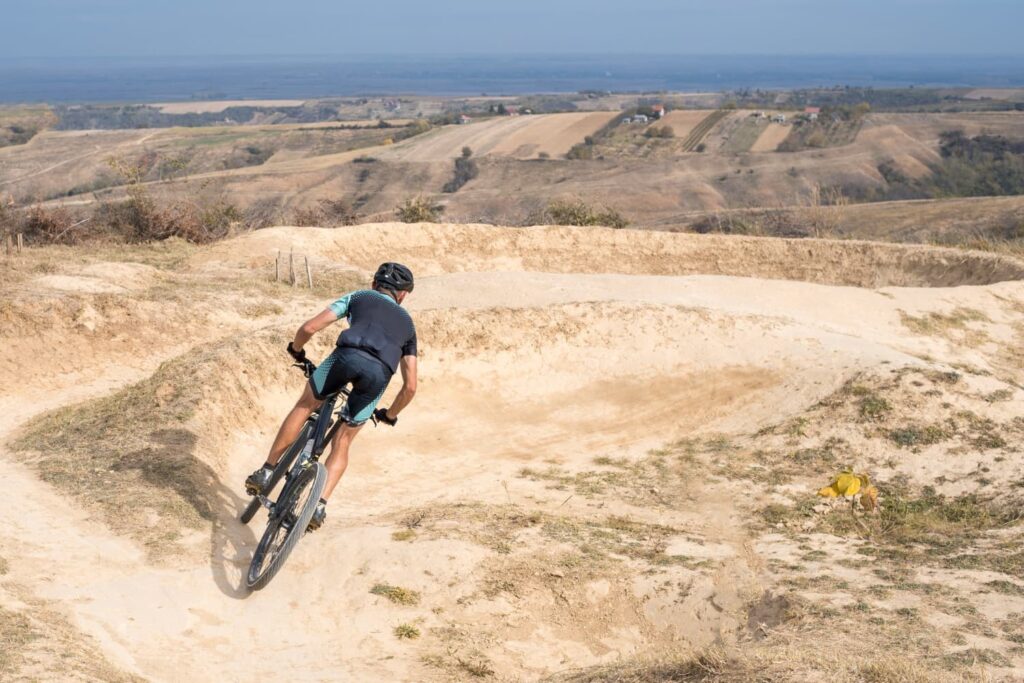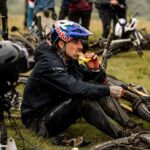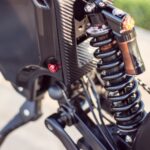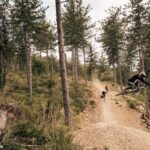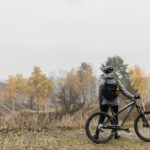Understanding Cornering Dynamics
When you’re zipping through a technical mountain bike trail, every corner can feel like a new challenge. Understanding cornering dynamics is essential if you want to improve your speed and control. At its core, cornering is about maintaining traction while navigating changes in direction. The more you grasp the physics behind it, the more you’ll be able to apply those principles on the trail.
Types of Turns
Before diving into techniques, let’s quickly break down the types of turns you might encounter:
- Gradual Turns: These are smooth, sweeping corners that allow for higher speeds.
- Sharp Turns: These require a significant reduction in speed and precise balance.
- Off-Camber Turns: Sloped turns that can throw off your balance if you’re not careful.
- Rocky Turns: Features dirt, rocks, roots, and other obstacles that demand careful maneuvering.
Recognizing the type of turn ahead will guide your approach and technique.
Body Positioning
Your body position is crucial for effective cornering. It can make the difference between gracefully gliding through a turn or eating dirt. Let’s look at the best positions for different scenarios.
Proper Stance
In general, you want to adopt a stance similar to a ready position: knees slightly bent, elbows out, and a low center of gravity. This allows your body to adapt to the bike’s movement without losing balance. Here’s how I usually approach it:
- Stand Tall: When approaching a turn, stand up slightly on the pedals with your heels down.
- Weight Distribution: Shift your weight towards the outside pedal to keep the bike stable.
- Lower Your Hips: As you lean into the turn, lower your hips to maintain a low center of gravity.
Getting these positions right can radically improve your cornering performance. Trust me, your bike will handle better and you’ll feel more connected to the trail.
Leverage and Lean
Now, let’s talk about leveraging your bike. Leaning into the turn is essential, but it goes hand-in-hand with bike lean. When you’re negotiating a turn, your bike and body should create the shape of an “L”.
- Inside Knee: Point your inside knee towards the corner to help guide your body.
- Upper Body Position: Keep your torso upright while letting your arms and legs do the maneuvering.
This configuration allows you to use the bike’s geometry to your advantage. There’s something remarkably freeing about leaning into a turn and feeling the bike grip the terrain.
Braking Techniques
Braking effectively is an art form unto itself on technical trails. It can either help you maintain control or throw you off balance entirely. Let’s break down how to master the brake.
Before Cornering
Before entering a turn, always assess your speed. If you’re going too fast, a smoother braking technique is necessary. Most riders use both brakes, but favoring the rear brake tends to be the safest route. Here’s how I usually do it:
- Get Set Up: Start braking straight before the turn, not while you’re in it.
- Ease Off: Gradually release the brakes as you turn to maintain momentum.
This approach helps avoid skidding or losing control. Additionally, the ability to inspire confidence in your braking technique will yield smoother cornering.
During a Turn
Braking while cornering can be tricky, but it is sometimes necessary. If you find yourself needing to brake mid-turn, ensure that:
- Stabilize Your Bike: Keep your weight over the bike and avoid sudden movements.
- Use the Rear Brake: Apply it gently to maintain grip and avoid sliding out the front.
It may feel unnatural at first, but with practice, you’ll learn to control your speed without flipping your bike.
Line Choice
Your cornering speed is not only affected by technique but also by your line choice. Picking the right line can often be the difference between a smooth ride and a bumbling struggle.
Finding the Apex
The “apex” is the point at which you have the greatest angle on the corner. To maximize your speed:
- Look Ahead: Scan the corner in advance. This allows your brain to process the best path.
- Cutting Corners: As you approach the apex, begin pushing your bike out wide before turning in sharply.
Finding that sweet spot on each corner can dramatically improve your performance. I’ve gone from timidly navigating turns to confidently charging through, all because I started focusing on my apex.
Technical Lines
Sometimes the most direct line isn’t the best one in technical conditions. You might need to navigate around obstacles:
- Look for Traction: Identify areas of the trail with better grip.
- Smoothing Out Ruts: If the trail features uneven terrain or ruts, try to find a line that avoids them.
Choosing the right line through tricky obstacles may slow you down a bit but it’ll save you from crashing. Remember, a solid ride is often about maintaining control, not speed.
Practicing Cornering Skills
The best way to improve your cornering is through practice. Find a local trail that has various types of corners and start experimenting with different techniques. Here are a few drills that have helped me immensely:
- Slow-Speed Turns: Practice navigating turns at a slow pace to master your body positioning and balance.
- Staggered Cone Drills: Set up cones and practice riding through, focusing on weight distribution and line choice.
- Ride with Friends: Challenge your buddies to see who can carve corners the best, making it competitive and fun.
As you practice, remember to reflect on how your body position and braking affect your ride. Improvement takes time, but the results will speak for themselves.
Conclusion
Mastering advanced cornering techniques on technical mountain bike trails may not happen overnight, but with attention to body positioning, braking strategies, and line choices, you can definitely elevate your skills. It’s all about understanding your bike’s dynamics and gaining confidence through practice. And, let’s be honest, that moment when you smoothly glide through a tricky corner is one of the best feelings out there.
So get out there, embrace the challenge, and enjoy the ride. After all, there is nothing like the thrill of conquering those corners and nailing that perfect turn. Stay safe, have fun, and keep riding!

